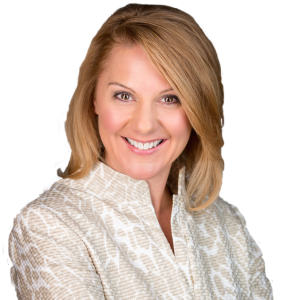Interview with Mary Poul, author of Sprint to Sales Success
 Who did you write this book for?
Who did you write this book for?
The book is for sales professionals who are willing to stretch themselves to be their best and want a smart way to do it. Sprint to Sales Success came out of the hundreds of interviews I’ve done for Sales Mastery magazine.
On a weekly basis I’m interviewing top sales producers, CSOs, coaches, and experts. Obviously this is a group of high achievers. After a while I picked up on some patterns that are important for any sales professional who aspires to be their best. The high achievers have taken an uncommon approach to growing their success. But it’s something that any driven person can pick up and do. So the book is for the person who is ambitious about becoming their best in their sales career and wants to make dramatic improvements quickly.
How will they benefit from reading it?
My tease is that someone will get at least 10% better at selling as a result of doing what they learn in the book. The reality is that 10% is a lowball number. If someone started doing what they learned and used the worksheets I provide with the book, they can turn one year on the job into the equivalent of 10 years of typical experience. I’m actually confident about that claim, and here’s why.
When you think about how most of your sales peers approach their career, they learn sales skills until they are comfortable. Then they rinse and repeat those skills for the rest of their career.
In the book I recommend ways to get the biggest payoff from working with a coach. It could be a manager or a mentor. Or they could work with a professional coach. A coach’s number one job is to keep nudging you beyond your comfort zone. Human nature is to want to get cozy comfortable and stay there. A few rare people are constantly pushing themselves beyond their limits. But most of us need someone we respect and trust to give us a push and help us along the path.
Honestly not everyone has it in them to become their best. Some people are just not coachable. I share a coach-ability scale in the book and realized my moments when I’ve been un-coachable. They sound like this,
“I’m so glad we had this leadership training because my boss really needs it.”
“How am I supposed to sell more when you haven’t given us any new products?”
“That customer is such a jerk. As if I have any control over late shipments.”
Other people have been conditioned to dream within their means. This is such a tragedy for talented sales people. If you’re afraid to set scary big goals because they’re unrealistic, then you’re left with common goals. What President’s Club member have you ever met that got there by meeting common goals.
I know in your coaching work Brian you like to help people get to a big dream or goal by taking small and doable steps that add up. They want to land a big whale account and aren’t sure how to go about it. You can help them find the next yellow brick in the road instead of stressing about how on earth they are going to arrive in the Land of Oz.
I share a framework in the book that I use to create a scary-big-and-achievable sales plan. I’m a bit addicted to this framework because it’s easy to work through and the process forces me to plan how I can triple my goal and achieve it. I always end up with superior action steps compared to when I was just focused on my original goal.
What will surprise a reader?
Well it may just be me who didn’t realize this. As I was doing interviews specifically for the book, I was asking people how their coach helped them figure out their career vision. It turns out that isn’t at all what people expect their coach to help with. As a matter of fact, everyone I interviewed had figured out their vision BEFORE they worked with their coach. They may have expanded it once they began working with their coach, but they knew what they wanted to achieve before seeking out help.
The great news is if a coach knows your end game, he can help you accelerate the path to get there. I know a lot of people get stuck though on figuring out what they want to be when they’re all grown up, so to speak. So I included how to Find Your WHY in the book.
What’s your favorite part in the book?
Like you, I appreciate small, practical steps that have a wallop of an impact. This one little action at the beginning of your day can change everything for you. Even before you get out of bed in the morning, ask yourself this question,
“Who will I make 120% happier today?”
Do the full visioning with it. Imagine the person in their current state of mind. Then imagine them becoming 120% happier as a result of you. And picture them thanking you for making them that way.
This one or two minute routine puts the meaning into your work. In the Find Your WHY chapter I cover the research into what type of purpose or career vision leads to the greatest sales improvement. It turns out that having an altruistic WHY is the most powerful. That’s probably what makes the 120% happier question my favorite.
The book isn’t at all about sales skills. There are many great books I can recommend if someone is looking for help with their sales process. This book is how to accelerate your path to mastery in sales. Selling is such a challenging profession. If you chose it as your career, why wouldn’t you want to become your best at it?
 Mary Poul is publisher of SalesMasteryMag.com, which produces a monthly magazine and interviews and hosts online events. She also founded the initiative Teach Kids 2 Sell, with the ambition of teaching one million kids the life skill of effective selling. Sprint to Sales Success is available on Amazon.com and comes with bonus worksheets to make sure readers do what they learn.
Mary Poul is publisher of SalesMasteryMag.com, which produces a monthly magazine and interviews and hosts online events. She also founded the initiative Teach Kids 2 Sell, with the ambition of teaching one million kids the life skill of effective selling. Sprint to Sales Success is available on Amazon.com and comes with bonus worksheets to make sure readers do what they learn.

